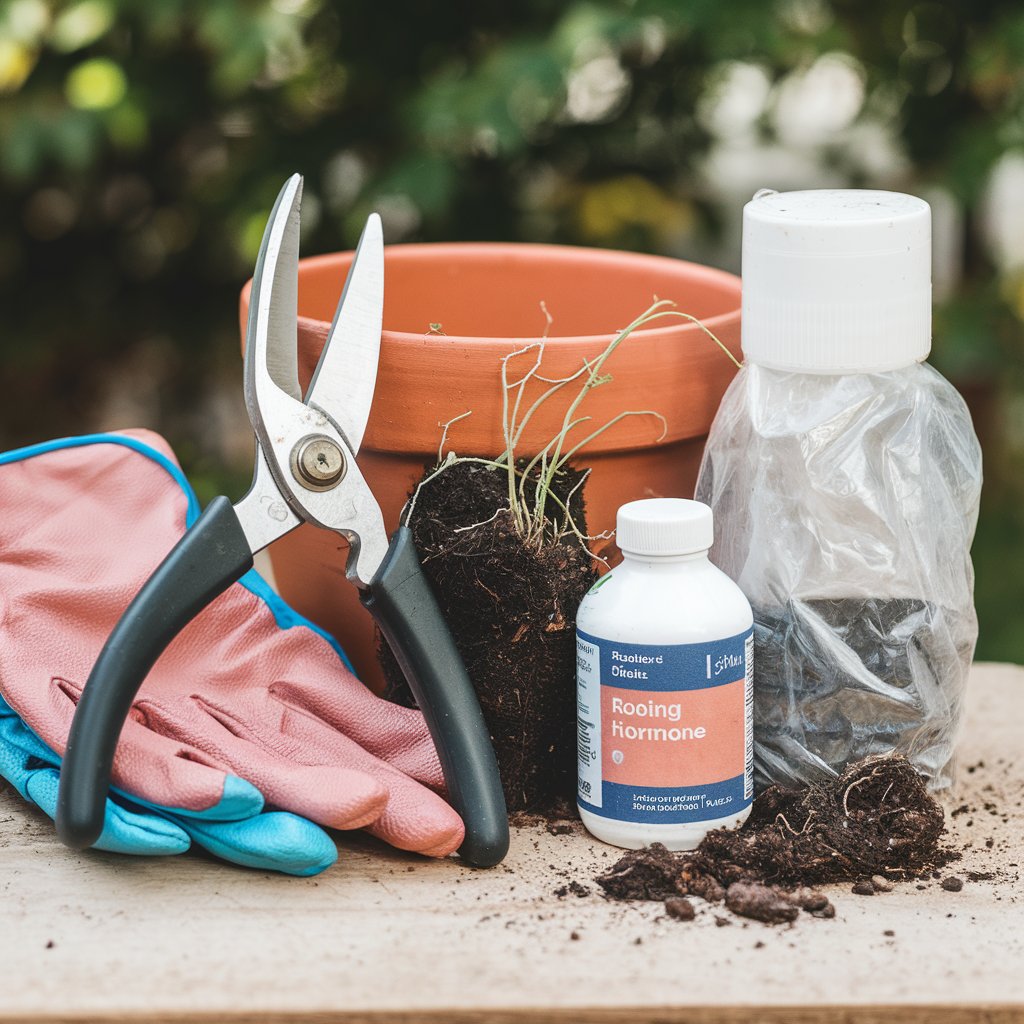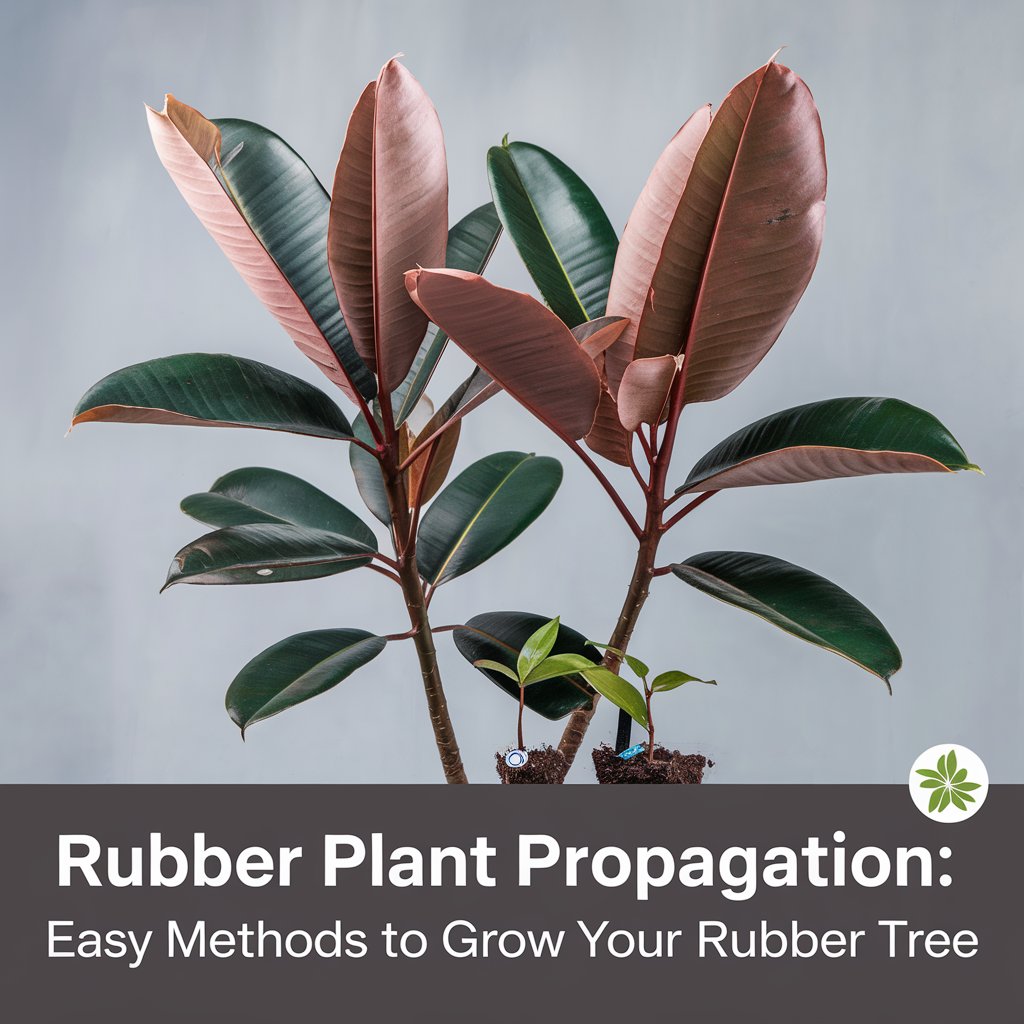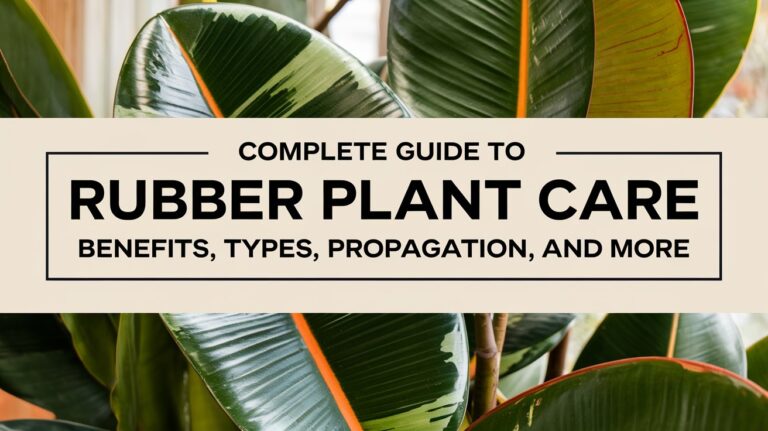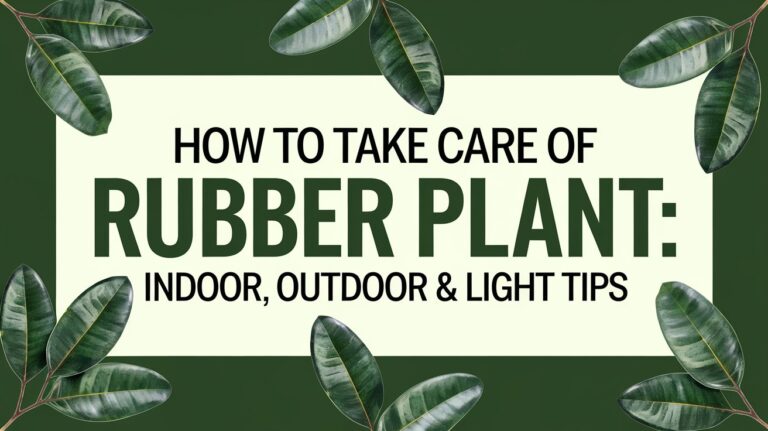Rubber plants, also known as Ficus elastica, are one of my favorite houseplants. Their glossy, bold leaves and ability to thrive in different environments make them popular for plant lovers like me. One of the best things about owning a Rubber Plant is the ability to propagate it. If you’ve ever wondered “how to propagate Rubber Plant” to grow your collection or share with friends,
This guide is for you! I’ve experimented with various rubber plant propagation methods, and I’ll walk you through the steps that worked best for me.
Why Propagate a Rubber Plant?
If you’re like me, you probably started with one Rubber Plant, and before you know it, you’ve fallen in love with having more! Propagating your Rubber Plant allows you to grow new plants without the cost of buying more. Plus, it’s enriching to see your cutting grow into a fully-fledged plant. Whether you’re working with a standard Rubber Tree, a Burgundy Rubber Plant, or a Variegated Rubber Plant, propagation gives you the chance to expand your plant collection easily. Not only that, it’s a fun way to share plants with friends or family!
The Best Time to Propagate a Rubber Plant
From my experience, rubber plant propagation is most successful in spring and summer. This is when your plant is actively growing, and the cuttings root faster. While you can still propagate during the colder months, it might take longer. I tried propagating in winter a few years ago, and it took much longer for the roots to form. So, if you want quicker results, wait until the warmer months to give your rubber tree plant propagation the best chance of success.
Essential Tools and Materials

Before you dive into rubber tree plant propagation, make sure you have the right tools. I’ve learned that the right preparation makes the whole process easier. Here’s what you’ll need:
- Pruning shears: Clean, sharp ones to avoid damaging the plant.
- Rooting hormone: Optional, but it can speed up the process.
- A pot with good drainage or a clear jar (if propagating in water).
- Soil: A well-draining mix for rooting in soil.
- Gloves: The rubber plant sap can irritate your skin, so it’s always best to wear gloves.
- Plastic wrap or a humidifier: If you’re propagating through aerial roots, moisture is key.
Once you have everything ready, you’re good to go!
Easy Methods for Rubber Plant Propagation
I’ve tried several methods for rubber tree plant propagation from cutting, and here’s what I’ve found works best. Let’s dive into the most effective techniques for growing your baby rubber plant propagation.
1. Rubber Plant Propagation through Cutting
Rubber plant propagation through cutting is my go-to method because it’s straightforward and always works. Here’s how I do it:
- Choose a healthy stem: I always pick a stem with at least one node (the spot where a leaf grows) because that’s where the roots will form.
- Make the cut: I use a clean pair of pruning shears to cut just below the node.
- Prepare the cutting: I remove the lower leaves, leaving a few at the top.
- Use rooting hormone: I dip the cut end in the rooting hormone to speed up the process, though this is optional.
- Place in soil or water: I plant the cutting in a small pot with well-draining soil and water lightly. You can also propagate it in water (which I’ll cover next!).
This method works well with baby rubber plant propagation as well as larger Rubber Plants, including Burgundy Rubber Plant propagation.
2. Rubber Plant Propagation in Water
Rubber plant propagation in water is one of my favorite methods. It allows you to visibly track the progress of the roots, which is so satisfying. Here’s how to do it:
- Cut a healthy stem with at least one node.
- Place the cutting in water: I use a clear jar, ensuring the node is submerged but the leaves don’t touch the water.
- Change the water regularly: I make sure to replace the water every 3-4 days to keep it clean.
- Wait for roots: In about 4-6 weeks, you should see roots forming. Once they’re about 1-2 inches long, I transfer the cutting to a pot with soil.
This method works wonders for me, especially when propagating variegated rubber plant propagation as it helps me see exactly when the roots are ready to be transplanted.
3. Rubber Plant Propagation from Leaf
Now, some people ask, Can rubber plants be propagated by leaves? While it might sound tempting, unfortunately, propagating from just a leaf won’t work. A leaf alone cannot grow into a full plant without a node. I tried this a while back, hoping for some success, but nothing happened. If you want your Rubber Plant to thrive, make sure your cutting has at least one node!
4. Propagation of Rubber Plant Through Aerial Roots
I’ve also had success with propagation of rubber plants through aerial roots. If your Rubber Tree has aerial roots growing along the stem, you can propagate these roots directly. Here’s how:
- Locate the aerial roots: I look for visible roots on the stem or branches.
- Wrap the roots in moist sphagnum moss: I cover them with plastic wrap to retain moisture.
- Wait for new roots: After a few weeks, new roots will form from the aerial roots, and you can cut below the rooted section and transplant it to soil.
This method works great for larger Rubber Trees, including the Burgundy Rubber Plant.
Troubleshooting Rubber Plant Propagation
I’ve encountered a few common issues while experimenting with rubber plant propagation from cutting. One of the most common problems is when the cuttings turn black after a few weeks. So, why does this happen?
Why do cuttings turn black?
Cuttings can turn black if they’re overwatered or if there’s too much humidity, leading to mold or rot. To avoid this, I always make sure to let the soil dry out between waterings and keep the cutting in a well-ventilated area. If I’m propagating in water, I change it frequently to keep it clean.
Caring for Your New Rubber Plant
Once the cutting has rooted, it’s time to care for your rubber plant! After all the hard work of rubber plant propagation in soil or water, you’ll want to give your baby plant the best chance to thrive. Here’s what I do:
- Light: I place the new plant in bright, indirect light.
- Water: I let the top inch of soil dry out before watering again to avoid root rot.
- Humidity: I sometimes use a humidifier or mist the plant lightly to keep the air around it moist.
Within a few months, you’ll have a healthy new Rubber Plant!
Frequently Asked Questions About Rubber Plant Propagation
Q: How long does it take to propagate a Rubber Plant?
A: It typically takes about 4-6 weeks for roots to form, but it depends on the method and environment.
Q: Can I propagate a Burgundy Rubber Plant in the same way?
A: Yes! The process is the same for Burgundy Rubber Plant propagation. The only difference is the color of the leaves!
Q: How do I know if my cutting is healthy?
A: If the leaves stay green and you see small roots beginning to form, your cutting is on the right track.
Conclusion
Rubber plant propagation is one of the most rewarding experiences as a plant lover. Whether you’re propagating from a cutting, using water or soil, or trying baby rubber plant propagation, the process is simple and satisfying. I encourage you to give it a try—there’s no greater joy than watching a new plant grow from a tiny cutting. Let me know how it goes for you and which propagation method you tried. I’d love to hear about your experiences!
Hi, I’m Pritesh, the heart and hands behind Roots & Earth. My love for plants started when I was just 5 years old, planting trees alongside my grandfather. Those early experiences in the garden left a lasting impression, shaping my deep connection to nature and sparking a lifelong passion for nurturing green spaces.
With an MBA under my belt, I’ve blended my business acumen with my love for gardening, creating Roots & Earth as a way to share my knowledge and inspire others. When I’m not working in my own home garden, you’ll find me traveling to the mountains—my favorite getaway for reconnecting with the natural world.
At Roots & Earth, I’m here to guide you on your gardening journey, whether you’re a seasoned green thumb or just starting out. Together, let’s cultivate beautiful, thriving spaces that enrich our lives and the earth.




